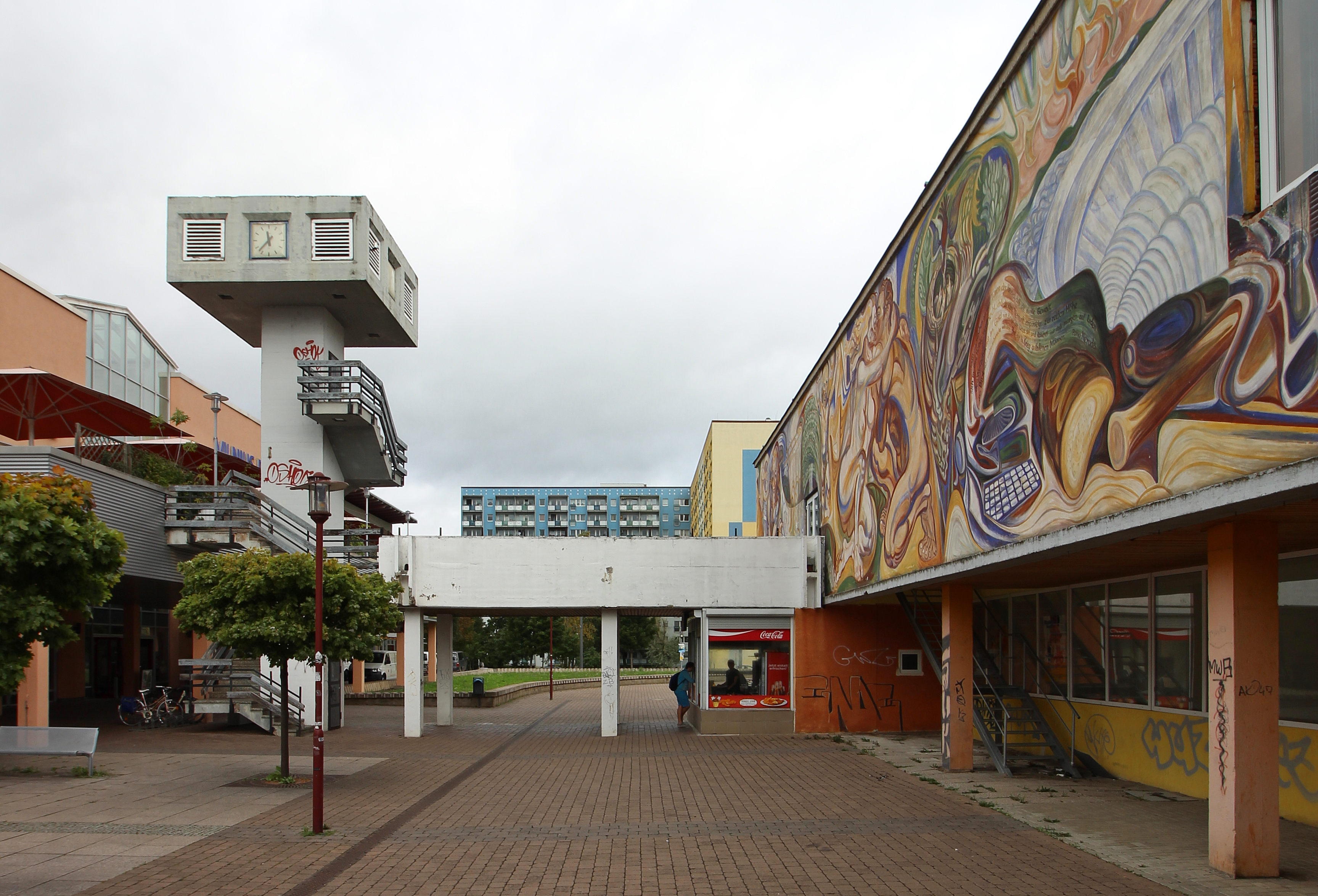Rieth is a northern neighborhood of Erfurt built between 1971 and 1978, the second in the Thuringian city following the Plattenbauten scheme. This German word hints at how the buildings are made, i.e. with prefabricated concrete slabs. Clearly this method was not exclusive to East Germany, but immediately became a widely known reference to the public housing settlements in the GDR, often with a negative connotation. Plattenbauten were designed to create fast and cheap housing solutions. It had become the main building type in order to encounter GDR’s immense housing problems. Many large-scale construction projects were carried out in collaborations, in which multiple architecture projects, that were considered the best, were mixed to get the optimum out of all the designs. This was also the case in Rieth. This housing scheme was a result of a collaboration between local architects and other professionals from Thuringia and Hungary. The outcome was very well received, it won the GDR Award for Architecture. The key element of the planning process, that we find strategic for the heritage enhancement, was the integration of architecture and fine arts in order to improve living quality. Due to the arrangement of the various function buildings, the spacious pedestrian areas with their open spaces and the works of fine art, this settlement holds a special architectural and urban quality.
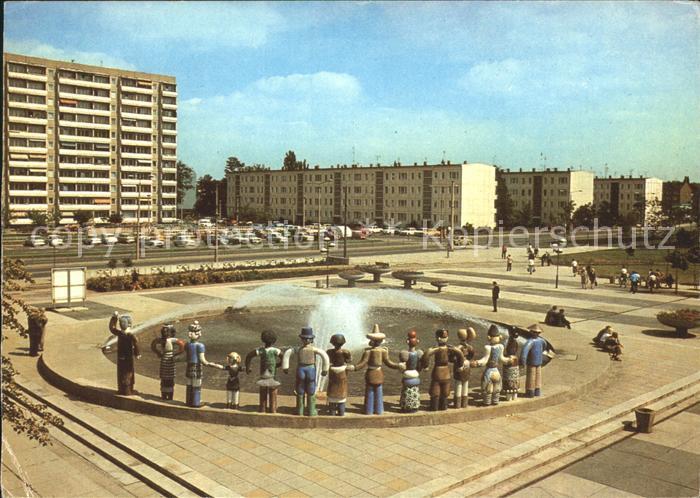
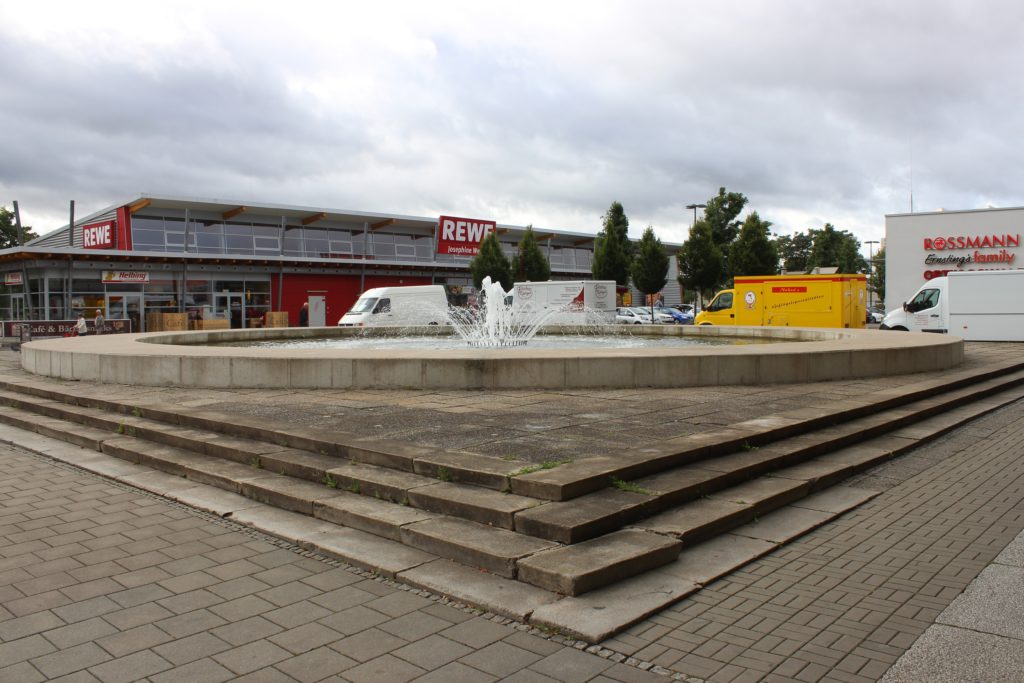
Rieth was conceived as a self-sufficient district with a central square that hosted all the leisure, health, and shopping services. It was named Platz der Völkerfreundschaft (“Square of the Friendship among Nations”). The place was adorned with two fountains, one of them displaying a group of stylized and colored ceramic outsized human figures made by the Weimar artist Eberhard Heiland, representing nations staying together in peace. The popular figures, however, were not granted a long existence: water quickly penetrated the hollow bodies, which were filled with supporting concrete on the inside. The frost then caused such severe damage that the figures had to be torn down after ten years. It has been recently restored but since the colorful sculptures are gone it looks like it lost its original spirit of “pulsing hearth” as the old video shows. It is just a container of water. According to the mayor of the district, this fountain will be restored in 2019 (the planned project description can be found here in German only). The second fountain north of the square was converted a few years ago into a flowerbed. Currently, there is only grass and no flowers. As residents started complaining, plans emerged to rebuild the fountain.
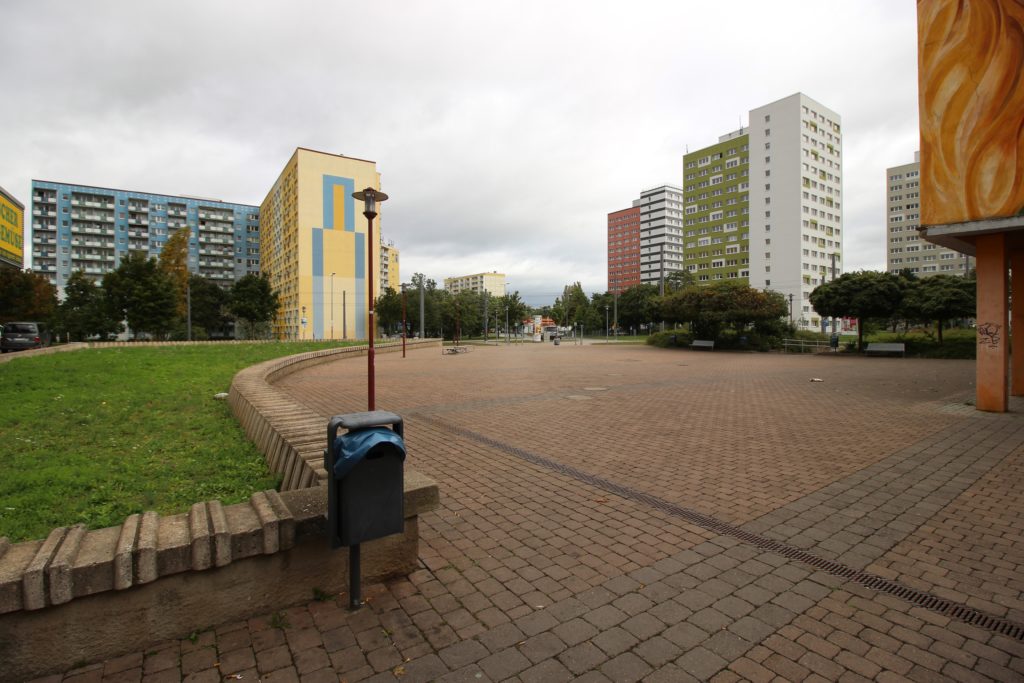
The integration of fine arts in the architectural concept can also be seen elsewhere in Rieth. For example, some of the blocks’ walls were decorated with structural elements. These concrete moldings, designed by a sculptor, were suitable for typified large-scale construction: they were even serially manufactured, industrially prefabricated products, which could be assembled at will and later even dismantled and reused elsewhere.
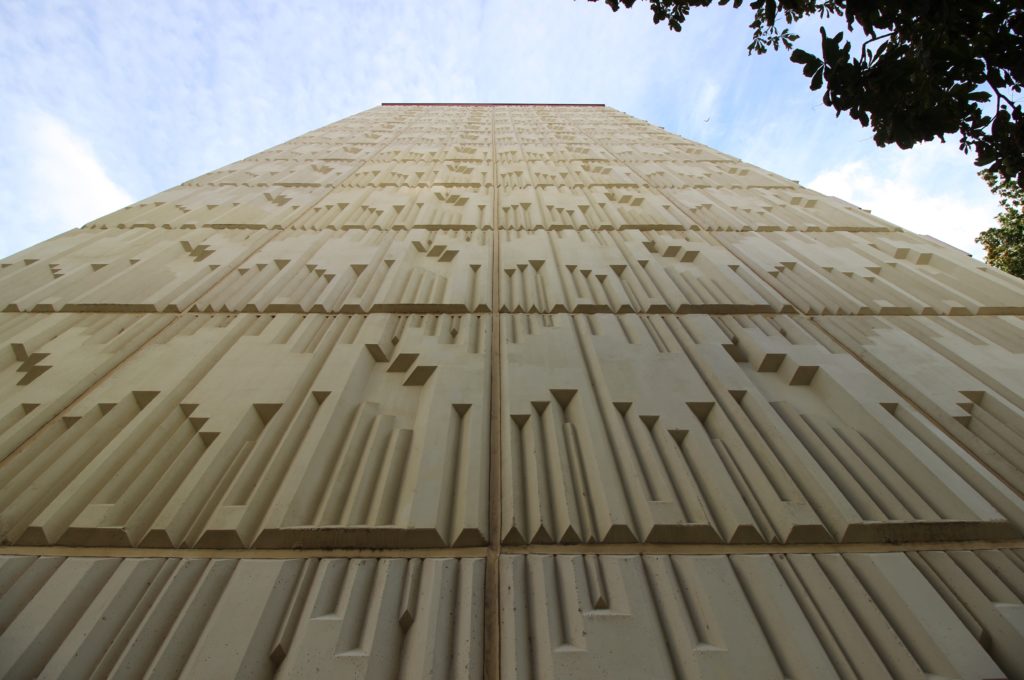
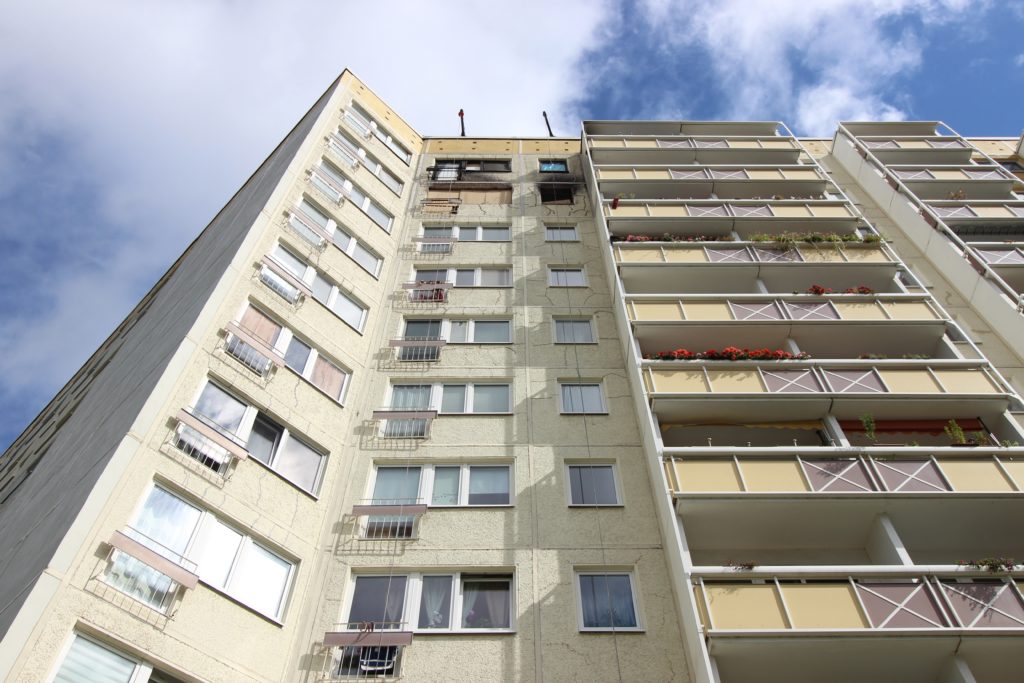
The square is still the focal point for the neighborhood to this day, even if the perception is that the best times have gone. It is basically a passage connecting two big fountains (only one survives) through the two main service buildings: a library-health center and a shopping center. The latter is named after the Lithuanian capital Vilnius (Vilnius-Passage) because, during the GDR era, the Erfurt district was twinned with it. The two buildings are still connected by the clock tower, which has been closed for the public since its structure is very deteriorated. The library building, with its mural painting, which according to the district mayor is one of the largest in Europe (6m x 102m), together with the bridge and the clock tower, are the most striking and authentic elements of the settlement. These elements represent the social, educational, and cultural politics of that time. The space refers to the classical market place, where the clock tower, equipped with bells casted in the Thuringian town of Apolda, can be seen as a modern interpretation of a city hall or a church. A similar arrangement had been built at the Cottbusser Stadtpromenade but has since been torn down. Rieth is therefore the last existing example of this concept, which must be conserved. The ministry of Erfurt wants to protect these elements since currently the only element under heritage protection is the wall painting.
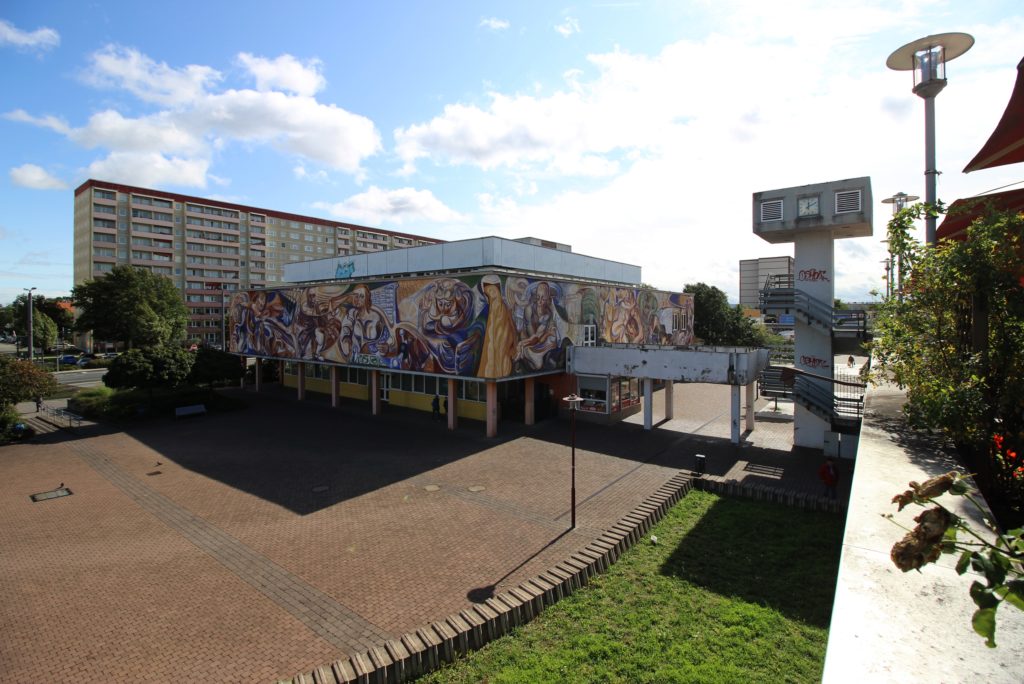
We believe that the heritage in Rieth should be conveyed to the local communities, including people interested in heritage from abroad. Even though there has been a fair amount of destruction in Rieth, its central and unique Marketplace with the clock tower is still worth a visit. Decades ago Rieth was on a postcard. Why not put it up there again?
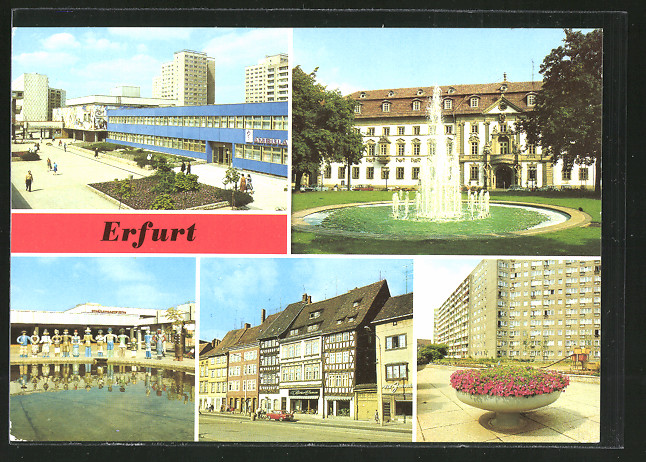
by Jacopo Ibello and Michèle Bless
